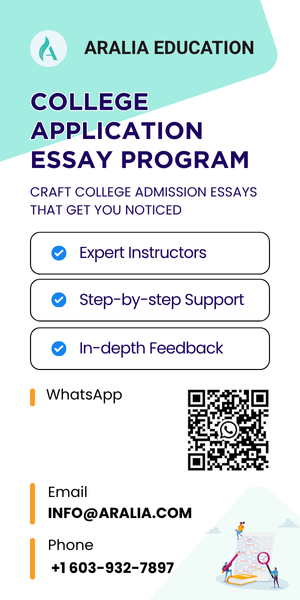When in doubt, following general formatting guidelines
If you are writing a new college-level essay, especially of a type with which you are unfamiliar, we have several standard practices for you to follow:
Title: For academic college-level essays, you often need to title your paper. Usually, your class syllabus or grading rubric will have instructions for titling your work. Remember to ask your professor if you are unsure.
Paragraph Spacing: When writing essays, Be consistent with the paragraph formatting; for example, if you choose to indent to separate paragraphs, stick with it. There are two options for paragraph breaks: indenting or double space. Keep in mind that paragraph formatting also depends on the style guide that you are asked to use for that class. “Style guide” refers to Chicago, APA, MLA, etc.; all of which are formal ways that disciplines have standardized the format of academic work best suited to the specific discipline. If there isn’t a specific style guide specified for your class, you can either look up what style is most frequently used for that subject or ask your teacher. There are also extensive directions online for each guide that you should reference for each step of your formatting.
Font: Paying attention to the professor’s requirements in terms of font. Most of the time, students can use a standard font like Times New Roman, Calibri, or Georgia with 11 or 12-point size.
Line space: Make the space between lines double-spaced or at least 1.5-spaced with standard margin (no need to change margin from the default document settings).
Numbering: If you are writing a long college-level essay, you can always number the pages automatically in Word or Google Docs. Generally, in college, you will have to include your last name along with the number, for example, Smith 1. Most often, this is done in a header or footer; you should check your style guide to determine which to use.
Identification header: Identification Header typically appears at the top of the essay (example below). An identification header should include your full name, the date, course number and section, and the name of your assignment. Sometimes, a professor may ask for your essay to have a cover page, in which case your identification header should be centered on that page.
Word Count: Professors normally provide students with the word limit for students to follow. Students should adhere to the specified word count to effectively communicate ideas within the given constraints and help maintain consistency across submissions.

What to do if you are submitting to a text box or a document
Occasionally, you may be asked to submit answers to questions or essays into a provided text box. In this scenario, you should always make sure to write your college-level essay using a word processor (or Google Docs) to ensure that you can save your work and have a backup copy. Then, copy and paste your contents into the text box to check that nothing is cut off by word or character limits. After that, make sure to review your essay in the text box and fix any formatting issues. The formatting capabilities of text boxes are frequently much more limited than word processors, so you’ll want to check for anything that may not have transferred correctly between formats. For example, many students bold or italicize words for emphasis; however, some text boxes don’t have that option; therefore, students should consider highlighting the words differently or just removing all formatting at once for ease.
If you are asked to upload and submit a document, follow our guidelines above to format your essay. Sometimes, you will be asked to submit a specific type of document, such as .doc instead of .docx; in this case, make sure that you double-check that your document has been saved using the correct type before submission. However, if no specific document type is requested, we recommend that you submit your essay as a PDF, as this format is more formal and universally accessible.
Structuring Your College-level Essay
In high school, you’ve likely become familiar with the typical five-paragraph essay structure that includes an introduction, a conclusion, and three body paragraphs. In college, however, your essays will expand upon this format to encompass more research and analysis. Depending on the class or subject, you will also often have more freedom to determine what you want to write and how you want to discuss your points. A college-level essay always has three parts: an introduction, a body, and a conclusion. However, the amount of body paragraphs, as well as how they are split up, depends heavily on the exact type of essay that you are being asked to write. Regardless, it is still very helpful to understand the general expectations for these sections.
In a formal essay, your introduction should give your reader background and context for your argument. Any introduction can start with an attention-grabbing statement related to the essay topic. The easiest way to do this is to answer the question “so what?”. You want to give your reader context for why your research or argument genuinely matters and why they should care about it beyond the confines of your paper. Or in the introduction, you can choose to list all the ideas you will discuss in the body or just provide a relevant introduction that leads to the main point of your essay and start your ideas in the body.
Then, either as a part of your introduction or as its own separate paragraph, you will write your thesis statement. The thesis statement outlines your argument and provides a roadmap for your reader to navigate the rest of your paper. The best way to organize a thesis statement is to list the topics of your sections or body paragraphs, with a brief explanation of your arguments, or how the topic supports your argument.
The body paragraphs are used to support and provide evidence for your thesis statement. Each body paragraph should start with an engaging topic sentence that smoothly transitions from your previous topic and introduces the new one. Your content will be different depending on the kind of essay you’re writing; but, in general, you should include evidence from reliable sources and explanations for that evidence that show why it supports your argument. Your concluding sentence should summarize your findings and help to transition to your next topic. In addition, you should add in-text citations for the ideas and facts in your body paragraphs. Utilize the style guide for the particular format you have been asked to follow for instructions on proper in-text citation formatting.
The conclusion for your college-level essay should be a summary of your main points, though it should include those as well. The conclusion is your opportunity to consider the greater implications of your argument and reiterate its importance to your audience. Often, the conclusion is used to explore the consequences of an argument on a broader scale or to suggest areas where further study is necessary. This paragraph should make both your main argument and the purpose behind making that argument clear and meaningful to the reader, utilizing the evidence that you provided in your body paragraphs to give it weight.
It can be hard to write a collegiate essay that stands out from the crowd – but with careful planning and preparation, you can make sure your essay is compelling and well-structured. By brainstorming ideas, researching thoroughly, and following the proper format guidelines, you’ll be able to create an essay that showcases both your knowledge and writing ability. Additionally, it’s important to take the time to read your essay and proofread your work carefully to ensure that your ideas are presented clearly. Crafting an excellent college-level essay takes time and effort – but with these tips in mind, you can be sure your hard work will pay off in the end!
For high school students searching for guidance for personal statements or college admissions essay, head to 4 Steps to Write Common Application Essays 2023-2024 to learn more!
Whether you are a budding writer looking to refine your skills or a student seeking to improve your academic writing, our writing courses cater to learners of all levels. By joining our courses, you will gain invaluable insights, practical techniques, and personalized feedback to enhance your writing prowess. From crafting compelling essays to mastering the art of creative storytelling, our courses cover a wide range of genres and writing styles.











